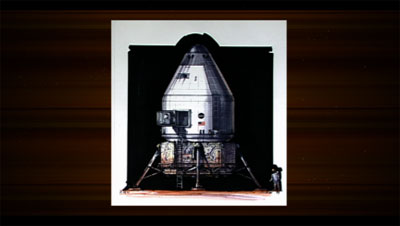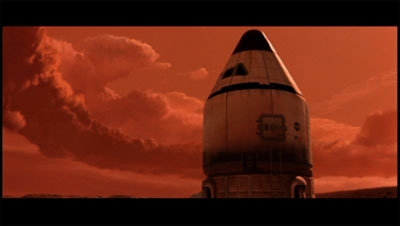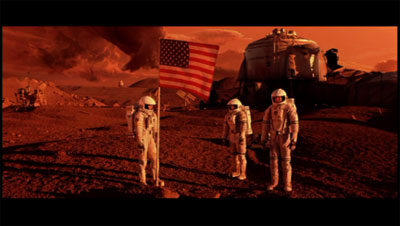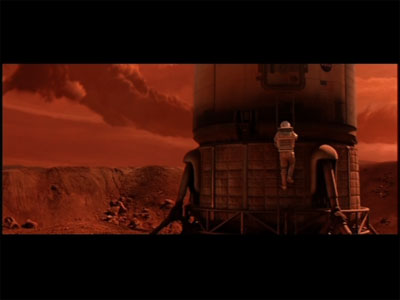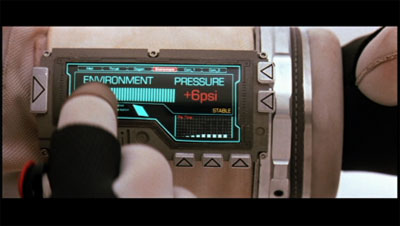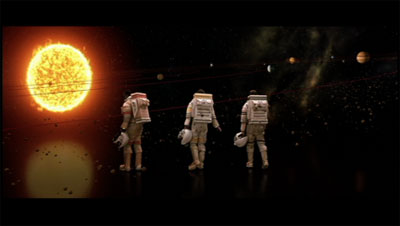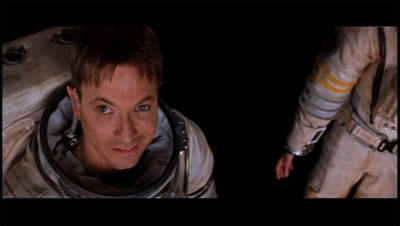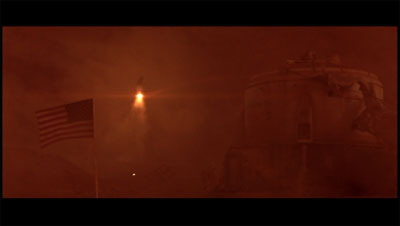|
|
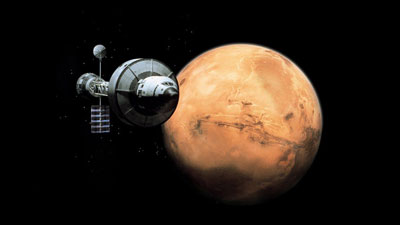 Mission to Mars promised a technically accurate representation of human Mars exploration, but fell short in many areas, including the story. (all photos credit: Walt Disney Video) |
Planet Hollywood, part 1: Mission to Mars
<< page 1: mission to nowhere
I’ve already mentioned that technically the film looks pretty good. Hopefully Bob Zubrin got a nice big check from the studio, because the base camp looks pretty much like his Mars Direct architecture. Most of the technical stuff looks reasonably accurate. In order to show the actors on a realistic-looking Martian surface, the filmmakers went to a giant sand pit south of Vancouver, trucked in boulders and rocks, and then spray-painted everything red.
Mars itself also looks pretty outstanding, with geographically complex landscapes under stunning red skies filled with dramatic clouds. In fact, the look of Mars is reminiscent of something that Mark Twain once said about the paintings of famed landscape artist Albert Bierstadt, that they were better than the original. Twain, of course, meant this s a putdown, and the same comment can apply to Mission to Mars.
Admittedly, all the images that we have seen of the surface of Mars from the Vikings and Phoenix and the three rovers have depicted terrain that was deliberately chosen for its flatness. But De Palma’s Mars is so filled with canyons and ridges and arroyos and threatening skies that it’s overkill. Mars barely has clouds, let alone the complex storm fronts shown in the movie.
| Mars itself also looks pretty outstanding, with geographically complex landscapes under stunning red skies filled with dramatic clouds. |
The Mars 2 crew reaches the Mars 1 base camp and they go inside. If you need any proof for just how lousy a director Brian De Palma is (he was, after all, nominated for a Razzie Award as “worst director” for Mission to Mars), watch the scene where the astronauts explore the dark Mars 1 base camp and then watch the scene in Aliens where the Marines explore the dark worker’s colony. James Cameron, at the top of his game, can scare the crap out of an audience. Brian De Palma couldn’t frighten a bed-wetting toddler if he jumped out of the bushes wearing a Frankenstein mask.
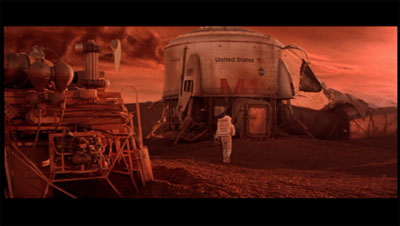 |
Jim and Terri encounter their old friend Luke (Cheadle), who has been playing Robinson Crusoe for a year and looks a bit… crazed. Being all alone on the Red Planet has nearly pushed him over the edge, and he initially charges at them with a hammer. But soon they’re all buddy-buddy again and Luke shows them the Face on Mars. He also plays them the radio signal being broadcast from the Face, and shows them his theory that the signal represents a DNA helix. Jim, not to be outdone in the genius department, figures out that they are supposed to supply the last molecules in the chain, representing human life. They broadcast this at the Face and a tall thin seam opens on its side.
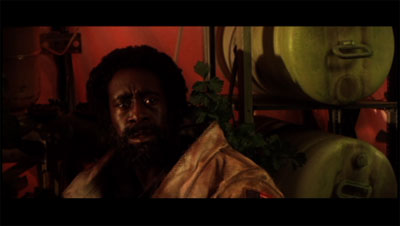 |
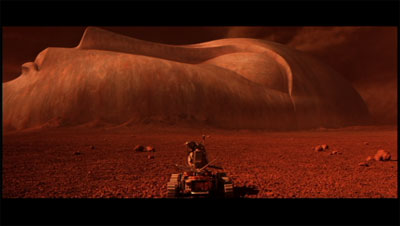 |
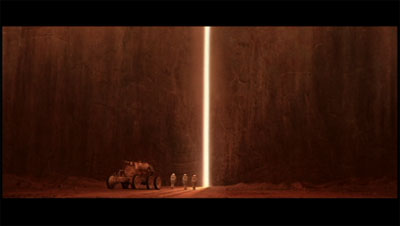 |
So, while Phil is stuck fixing the spacecraft, Terri, Jim, and Luke head out to the Face. They go inside, where they discover that the interior is pressurized. They then encounter a giant three-dimensional planetarium that provides endless minutes of visual exposition, which they occasionally have to help along with some additional dialogue.
Mars, the audience is shown/told, was once inhabited by a race of tall, skinny, humanoids. Except that an asteroid slammed into the planet and they all decided to flee in little golden spaceships. Two spaceships stayed behind. One remained on Mars, and the other headed toward Earth, where it seeded the oceans with DNA, leading to bad CGI of walking fish, dinosaurs, bison, humans, and eventually Van Halen. Jim provides the last bit of exposition: “They’re us. We’re them.”
They then figure out that there is one alien spaceship still remaining on Mars, and it is counting down to leave.
It’s a common Hollywood cliché that any character who has a terminal illness (Space Cowboys) or has lost a loved one (I Am Legend) is the first to volunteer for the grand suicide mission, so it is no surprise that Jim is the one who decides to travel in the alien spaceship. So while Terri and Luke race through a sandstorm back to the Earth return vehicle that Phil has fixed, Jim hops in a tube that carries him up to the spaceship and fills up with liquid. The Earth ship blasts off, but is nearly clipped on its way to orbit by Jim in his little golden spaceship on its way to Sagittarius. The end.
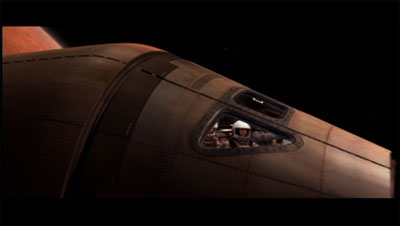 |
In spite of its flaws, Mission to Mars still ranks as one of the most realistic near-term science fiction movies ever made. The Mars 1 base, the Mars 2 spacecraft, and the spacesuits and interiors all look relatively realistic—easily in the 90th percentile for accuracy. (Note: this movie review should not be construed as an endorsement of the feasibility of Mars Direct.) Yes, the Mars 2 spacecraft is not big enough for a proper centrifuge, but the filmmakers actually built a centrifuge and filmed in it, something that nobody else had done for a space movie for over three decades. (My own preference is for the 1984 Case for Mars conference cycler so memorably illustrated by Carter Emmart. That was a cool spacecraft.)
| In spite of its flaws, Mission to Mars still ranks as one of the most realistic near-term science fiction movies ever made. |
Certainly the movie’s artists and designers put a lot of thought and effort into the look of the film. They actually built a 22-foot-long (6.7-meter-long) model of Mars 2, and combined images of the giant model with CGI. Some of the EVA scenes are also quite beautiful to behold. The Mars 2 centrifuge was a real set that weighed 60,000 pounds (27,200 kilograms) and was equipped with practical lighting. The extended edition DVD includes a “making of” documentary that is filled with lots of great details that ultimately leave the viewer rather depressed that so much talent and effort went into making a movie that is rather tedious to watch.
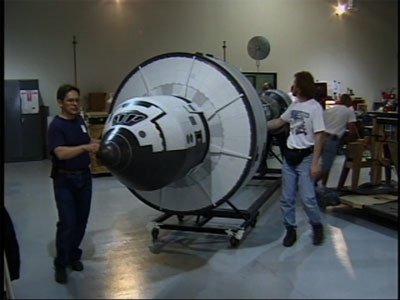 |
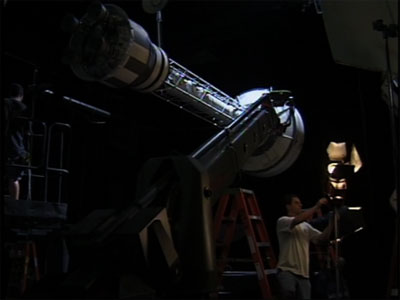 |
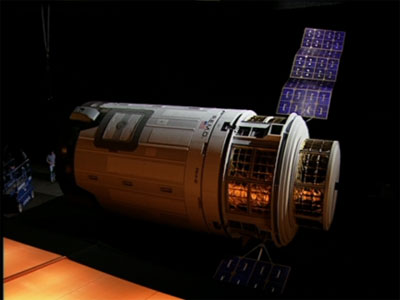 |
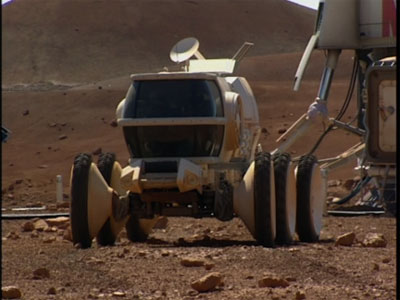 |
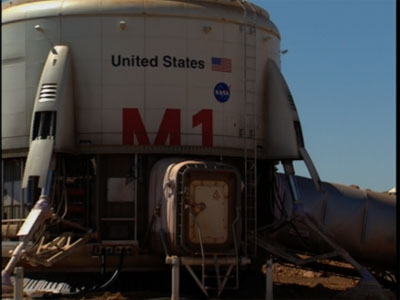 |
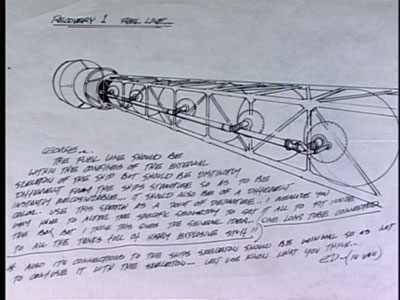 |
What brings Mission to Mars down, however, are the things I’ve already listed: the awful dialogue, the characters who are drawn too large and too emotional in order to appeal to a female audience (“Jim, Woody and Luke are FRIENDS!” “Woody and Terri LOVE EACH OTHER!”), and the incredibly lame musical score. The pacing is also bad. Some of the plot points are just stupid. Couldn’t the writers have found a better reason to put the crew in danger than meteors? Couldn’t they have invented a better way to rescue them than have them jump off of one spaceship and miraculously catch another one heading in a different direction at thousands of kilometers an hour?
| If you managed to see ABC’s now defunct space soap opera Defying Gravity, you might have noticed its similarity to Mission to Mars. Clearly Defying Gravity’s producers were heavily influenced by the 2000 film. |
But besides all of this, the film is also crippled by its ending. The aliens-seeded-Earth-with-DNA story has been done by several other movies and TV shows. The group of astronauts standing around gaping in awe at the alien wonders has also become a cliché. And although some of Mission to Mars is pretty to look at, the climax never rises to the level of awe inspiring. Even if you didn’t fall asleep long before the finale, you aren’t going to be impressed by the aliens or the final scenes. For one thing, the aliens don’t actually do anything. We only see one, and she/it is a hologram and never says a word.
If you managed to see ABC’s now defunct space soap opera Defying Gravity, you might have noticed its similarity to Mission to Mars. (See “We watch so you don’t have to”, The Space Review, September 8, 2009) Clearly Defying Gravity’s producers were heavily influenced by the 2000 film. The interior of Defying Gravity’s spaceship Antares looked a lot like the Mars 2. There were also several brief shots on Mars in Defying Gravity that were practically lifted from Mission to Mars. In one scene a lead character is preparing to launch off of the Martian surface in a dust storm, just like in Mission to Mars, and two other characters watch the ship blasting off in a scene that looks nearly identical to one at the end of Mission to Mars. Somebody from Defying Gravity owes Brian De Palma a check. De Palma owes his audience an apology.
Next week: Red Planet
Dwayne Day watches a lot of movies and really should read more good books. He can be reached at zirconic1@cox.net.
|
|

